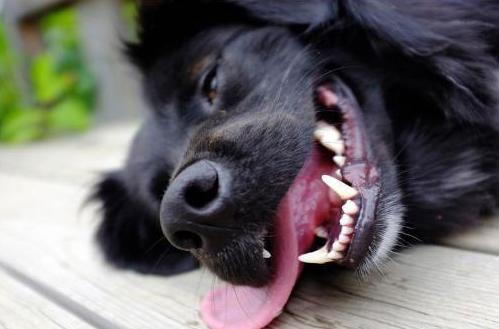
- posted: Jan. 18, 2019
Canine Teeth
Having healthy teeth is a very important aspect of a dog’s health.
ANATOMY OF THE TEETH
Dogs have multiple types of teeth. A dog will have incisors, canines, premolars and molars, each with a different purpose.
Incisors
Dogs have 6 incisors on both the upper and lower jaw. These teeth are used for nibbling and for grooming themselves and other dogs.
Canines
There are a total of 4 canines in a dog’s mouth; 2 on the upper jaw and 2 on the lower jaw. Canines are mainly used for grabbing and holding things and occasionally for defence.
Premolars
Behind the canines are the premolars. Dogs have 4 premolars lining each side of both the upper and lower jaw, totaling 16 premolars in the mouth. Premolars are used for tearing and for chewing on their toys.
Molars
An adult dog will have 2 molars on each side on the upper jaw and 3 molars on each side of the lower jaw. Molars are used for crushing things such as a large biscuit.
PUPPIES
Puppies will have 28 teeth which will appear between three and six weeks of age. Just like humans, this first set of deciduous, or baby teeth, will fall out beginning at 4 months of age in order for the adult teeth to grow in. Puppies do not have molars, but instead they grow in at 6 or 7 months after all the other adult teeth have grown in. They will have a total of 42 adult teeth.
COMPLICATIONS
Dogs can have various complications and problems with their teeth. Just like humans, dogs can also get gum diseases and cracked or broken teeth.
Gum Disease
- Gum disease occurs when plaque builds up to a point where it becomes tartar, a hard brown substance. This results in inflamed gums, destroyed tissue and loss of bone. Plaque can turn to tartar in as little as 24 hours.
Some symptoms of gum disease are:
- Problems picking up food
- Bleeding or red gums
- Loose teeth
- Blood in the water bowl or on chew toys
- Bad breath
- Not wanting the head touched
- Chewing on one side of the mouth
Cracked/Broken Teeth
Chewing on the wrong objects such as rocks, crate railings or other rock hard objects can crack or break your dog’s teeth. With a cracked or broken tooth, the nerve may be exposed which would cause immense pain. If bacteria is introduced into the body, infection is also possible.
Retained Deciduous Teeth
A problem which may happen with puppies is retained deciduous teeth. This is when the deciduous teeth have not fallen out after the adult teeth have grown in. If all the teeth have not fallen out at 6 months, it becomes a problem. Retained teeth are more common with smaller breeds and dogs with pushed-in faces such as bulldogs and pugs. If not treated, the crowding of the teeth will increase the chance of tartar deposits, tooth decay, gingivitis and periodontitis. Your veterinarian can help treat it by surgically removing the tooth.
If your dog has any of these symptoms or problems, visit your veterinarian and they will help treat your dog.
MAINTAINING HEALTHY TEETH
There are a few ways you can help keep your dog’s teeth clean and healthy. You can do an annual oral examination for the veterinarian to clean and x-ray the teeth. You should also be brushing your dog’s teeth daily using pet toothpaste. This really helps to prevent oral diseases. Another option is to give your dog a hard, rubbery chew toy to chew on everyday. Certain foods will also help keep your dog’s teeth healthy. Hard foods will help to scrub their teeth while they eat and some foods have additives which help plaque from hardening.
Lakeshore Road Animal Hospital
2319 Lakeshore Road W, Oakville
289-837-0100
Office Hours
8:00 AM - 8:00 PM
9:00 AM - 2:00 PM
Closed
Location
2319 Lakeshore Rd W.
Oakville, ON L6L 1H2, Canada


